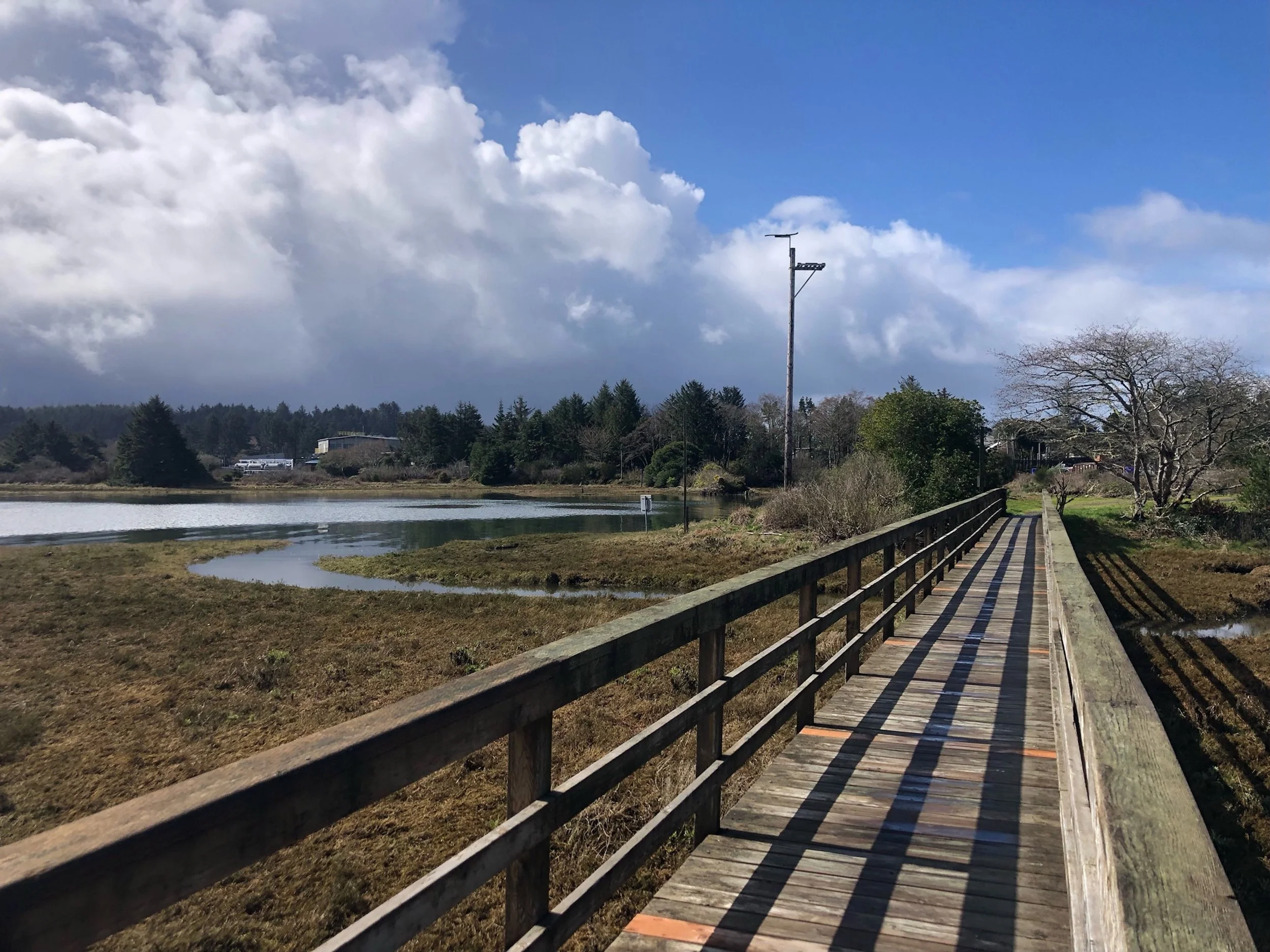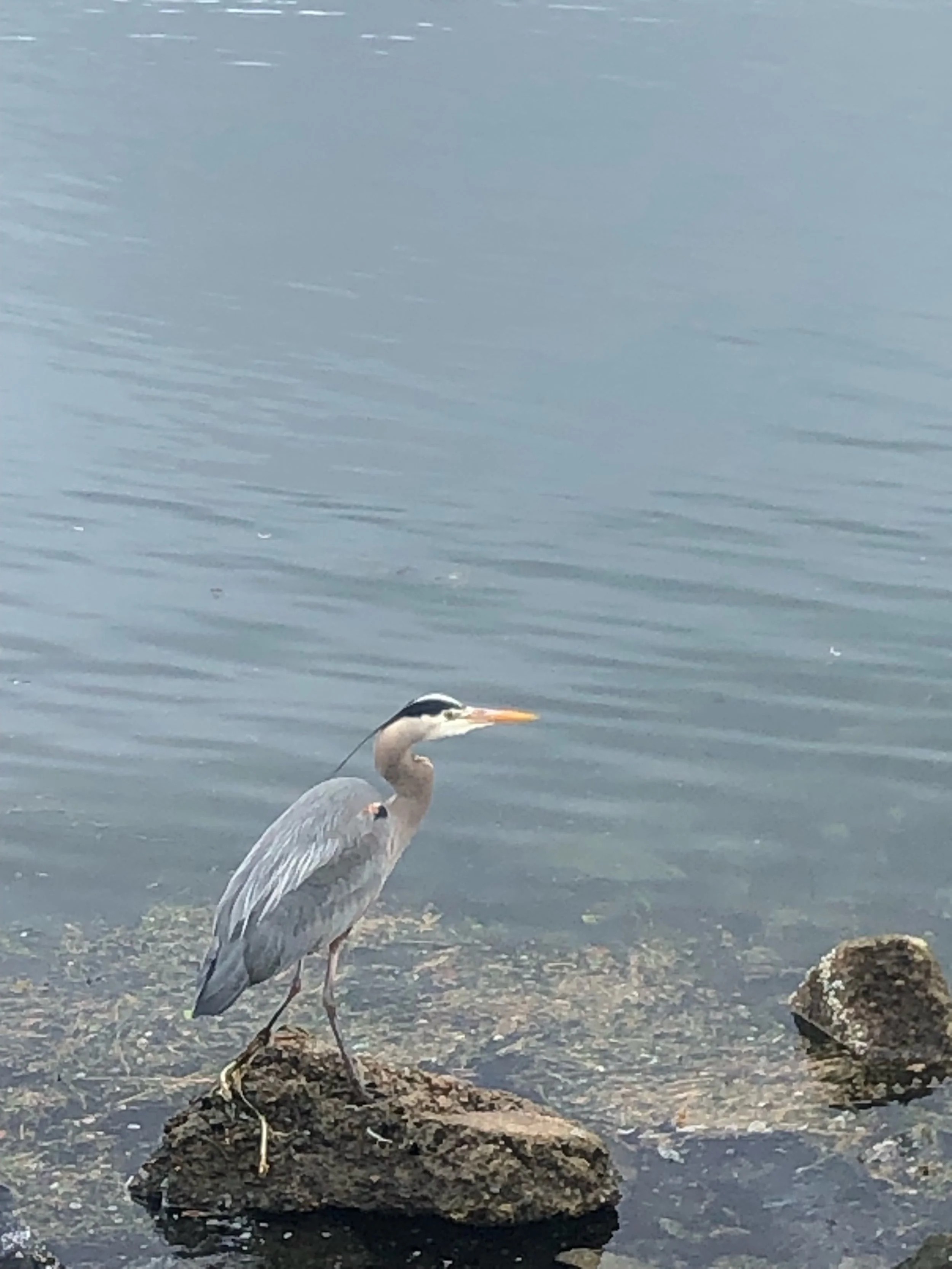This shore is a nice trail


Story & photos by Michael Edwards
For the TODAY
Indifferent to the sleet collecting on its tan and brown feathers, a whimbrel probes the mudflat for invertebrates. She stabs her decurved bill into a burrow and extracts a defiant little crab. Out in the shallows, a brant slurps eelgrass from the calm brackish water. To ease digestion, the dense, compact goose manipulates the grass with its tongue, forming the blade into a ball before gulping it down. Along with the Arctic-bound whimbrels and brants, Yaquina Bay Estuary is home to boisterous kleptoparasitic gulls whose elaborate aerial acrobatics seem to be an extravagant adaptation for filching terrestrially abundant clam flesh from their mates. Its feet suction-cupped to the muck, a great blue heron stands butler-erect, silently visualizing a juicy frog carelessly hopping across a decaying log within its strike range. At eye level, a pair of rambunctious rufous hummingbirds zip over the lichen-laden boughs of a marsh-stunted, salt-tolerant Sitka spruce. The fearless little birds flashing their iridescent copper and red feathers at every turn.
Along the Yaquina Bay Estuary Trail, nature reveals its secrets to the slowest, most deliberate walkers.
The estuary is where the fresh water of the Yaquina River and the salty Pacific mix to create one of the most challenging, yet biologically productive environments on the planet. Select species of plants and animals employ a variety of creative adaptations to exploit the estuary’s abundance, while coping with the extreme variability in water coverage, salinity and temperature. Stewart T. Schultz wrote in “The Northwest Coast, A Natural History” that “eelgrass tolerates all salinities from fresh to seawater. It survives the seawater with the help of salt glands on the leaves that remove sodium and chloride from the cell sap.” Schultz added that the avian buffet of clams and worms escape the mudflat’s extremes by burrowing into the consistently cool, microorganism-rich mud. The sloughs that branch like capillaries throughout the estuary provide nurseries for juvenile fish, including threatened coho salmon.
In addition to providing habitat for birds, mollusks and fish, the estuary also has a capacity to counter the negative effects of climate change.
Laura Brophy, the director of the Estuary Technical Group at the Institute for Applied Ecology in Corvallis is studying the benefits of “blue carbon” or carbon stored by salt water ecosystems in their vegetation and soils. Brophy writes that despite their small global footprint, estuaries’ deep, waterlogged soils bury many times more carbon than even a tropical rainforest.
“Conversely,” she said, “when these areas are degraded, that carbon is released back into the atmosphere and the carbon sink is removed.”
Since the onset of the Industrial Revolution, the majority of the nation’s estuaries have been filled-in and converted into farmland, ports and cities. However, though Oregon’s estuaries have been degraded, and in some cases drastically altered, as a whole, they are healthier and more intact than the estuaries of other coastal states. In her scientific article comparing historical losses of forested ecru-shrub, and emergent tidal wetlands on the Oregon Coast, Brophy and her team mapped all of the coast’s major estuaries and detailed the health status of those estuaries. The hope is that this meticulous science will help citizens and policy makers work to conserve and enhance healthy estuaries and strive to restore altered estuaries, like the formerly degraded but now recovering Salmon River Estuary, north of Lincoln City.
To get the full estuary experience, and pad your eBird numbers, bring your binoculars and bird identification book and walk the Yaquina Bay Estuary Trail at low tide, take a lunch break and eat some Dead Guy Fish and Chips at Rogue Brewery, tour the Hatfield Marine Science Center, and return to the trail again as the tide oozes back in.
Even for Luddites like me, eBird is a fun, free and friendly website that will not melt your brain or cast you into the frustrating abyss of nuclear code-complex password black holes. The site helps citizen scientists like yourself and the world’s ornithologists identify and track bird movements. Introduce your own fledgling scientists to this handy website and watch their imagination and scientific understanding soar.
The 1.1-mile Yaquina Bay Estuary Trail is sandwiched between the Hatfield Marine Science Center and the estuary. The path is flat and mostly wheelchair friendly. One short section of the trail is sandy but still manageable by wheelchair, with some help. Because of the fragile marsh ecosystem and prevalence of vulnerable shore birds, dogs are not welcomed on the trail. The path includes several helpful kiosks that help visitors sort out the various features and creatures of the estuary. The trail is open year-round and visitors are not charged a fee.
